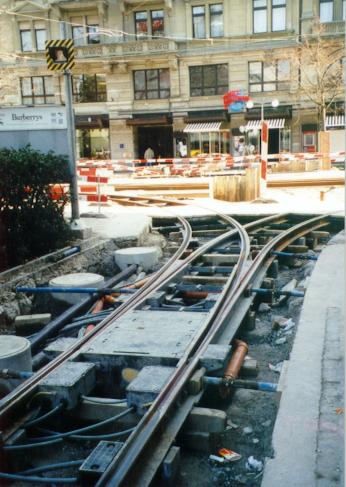LightRailNow.org has posted a new article analyzing the reasons for the high cost of light rail, and reporting on a few cities success in keeping costs in check: Rapid Streetcar: Rescaling Design and Cost for More Affordable Light Rail Transit.
Overall, much of the expense is due to overengineering. Here are some examples:
- Many lines with low traffic could be built as single tracks with passing sidings, but this is almost unheard of in modern transit.
- Sations are often more extravagant than needed.
- Transit projects are often bundled with, or encumbered by, various streetscape improvement projects, utility work, etc.
In a similar vein is the issue of vehicle performance. As speeds increase, there seems to be a point where costs snowball and go up dramatically. Light rail vehicles that travel up to about 45 mph, about what traditional streetcars like PCC's could typically do, can be built lightly and relatively cheaply. Design them to go faster than that, and:
- Overhead becomes much more complex; simple suspension (single wire) gives way to compound catenary (in other words, you get something that looks designed more for bullet trains than trolleys).
- Cars must be built much heavier to survive collisions.
- So track must be built heavier, with a deeper roadbed.
- So utilities under the street must be dug up and relocated.
- So track must be built heavier, with a deeper roadbed.
Ironically, many light rail systems, due to stop spacing or street running, give their high-performing LRV's so little opportunity to really book it, that the effect of being able to run at 65-75 mph on actual trip times is next to nothing.
A few cities, notably Portland, and perhaps in the future Sacramento, have taken these observations to heart and had success augmenting heavy light rail lines built for high volume, higher-speed, suburb-to-downtown travel with simpler lighter and cheaper, honest-to-goodness streetcar lines.

Some interesting trackwork in Zürich, Switzerland.
No comments:
Post a Comment